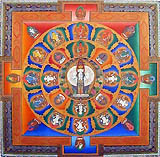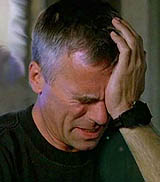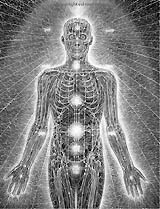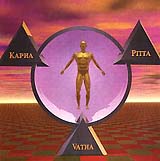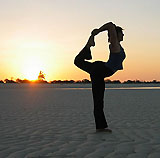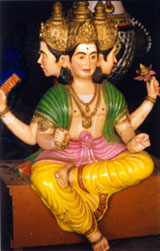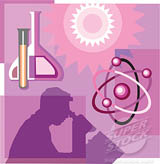Systems and beyond systems
A dilemma
The recent controversy over some unlabelled ingredients from a traditional medicine source has stirred up an old controversy — the validity of ancient healing systems vis-à-vis the modern medical establishment. The advocates of the first believe that allopathy, the child of modern science, is risky and dangerous, that it merely suppresses symptoms rather than cures the illness and that its side-effects are excessive and can even be life-threatening. Those who side with the latter believe that all other systems of healing other than allopathy are unscientific and unproven, that they do not have any effect or perhaps only a minimal one, that it is dangerous to use them for serious illnesses since their non-effectiveness simply leads to a natural worsening, and that whatever cures are claimed are simply the result of natural resolution of the illness rather than an effect of the medicine. Since both sides cling to their beliefs, people are left to decide for themselves and choose whatever system they prefer.
The need
If this were all, then there would be no real issue. Each camp would be left to fend for itself, each free to choose, there would be enough scope for one and all. But the issue is much deeper than it appears on the surface and that is why Nature repeatedly raises the matter before us to be cleared in order to arrive at a higher and greater reconciliatory synthesis. This cannot be achieved by an indiscriminate combination of therapies, since apparently each has a different rationale (or non-rationale), different mode of action, different requirements from the patient and perhaps each suits a different clientele. It is necessary to observe these differences before we can go deeper and discover an essence of healing that is common to all, thereby reaching a truer synthesis.
The Modern vs. the Traditional
Of course, it can be a little hazardous to club and combine all traditional systems together. Nevertheless, for purposes of brevity, one can do so, taking care not to undermine each one’s point of difference. The following table looks at some issues:
Issue |
Modern medicine | Traditional systems |
| Level of operation | Apparently works through known material processes and physical pathways. | Apparently the mechanism of action is unknown. Possibly works on material as well as non-material energies – states like the vital (prana), subtle-physical, psychological, etc. |
| Orientation | Disease and pathology orientated, in the sense that it identifies the illness and acts upon it directly without much consideration of individual patient factors. | Patient and health-orientated, in the sense that it takes into consideration the patient’s constitution and works at strengthening his natural resistance. |
| Rationale for working | Believes the physical is the only reality and therefore the origin, cause and cure must all be physical. | Believes that there are other levels of consciousness and therefore the origin, cause and cure may be subtle as well as physical. |
| Action | Precise and quick since it acts directly on the physical. | Action possibly more general and diffuse since it acts on other levels as well. |
| Developmental force | Developed through observation, testing and experimentation under the stress of rational sciences. | Developed through intuition, empirical evidence and observation. |
Let us for now leave aside these well-known differences. Let us also for a while set aside those commercially driven motives behind the R&D search for new molecules. Let us look at the issues that are even deeper.
Has not modern medicine unveiled a marvellous surgery that can replace or even replicate organ for organ — who knows, tomorrow, even man for man? It may be noted that not all allopathic drugs have serious side-effects. On the contrary, though most have some unwanted impact on organs other than the targeted one, they are still usually mild and pass by unnoticed. In fact, one of the present trends in allopathic drug research, is to create molecules specific to target cells so as to act with maximum precision and minimum side-effects. Equally, it would be preposterous to say that medicines in traditional systems have absolutely no side-effects. However, because the latter acts upon the person as a whole, it is only natural that the medicine, whilst correcting one point of problem, does not ignore the rest. Because they also tone up the natural reserves of the body and vitality, the possibility of side-effects is largely reduced. What allopathy tries to achieve through increasing precision, the traditional systems achieve through holistic balance.
Despite treatments
Yet, through the whole process, man has become increasingly crippled. His natural defences have become increasingly weak and even though he can prolong his life through artificial external support, his resistance to illness and ability to master his body by the powers given him by Nature has markedly declined. The difference is too obvious to go unnoticed and is becoming even more evident in health and illness patterns spread over the rural-urban divide. It is a strange paradox that our so-called primitive ancestors had a much more robust health and natural immunity and could enjoy a healthier life despite unhygienic conditions as compared to our more informed, though medically pampered, modern city dwellers. Of course, the reason for a decline in natural health and vigour is not only due to the proliferation of modern medicine, but several other associated factors, such as overcrowding, industrial pollution, lack of fresh air, life led at a feverish pitch and restless pace with scarce time for rest and exercise, a disturbed sleeping cycle, exposure and slavery to crippling comforts, addiction to junk food, poisonous chemical admixtures in everything from insecticides and food preservatives to cosmetics and fabrics and, added to this, the unseen invasion of electro-magnetic fields, noise and invasion of radio waves from all sides, both into our homes and heads. Life has gone out of balance. A lifestyle built on the almost exclusive development of certain faculties of the mind, that only boosts crude vital enjoyments, undermines the balance of our body and mind.
Different outlooks
Thus we can say, without fear of exaggeration, that modern science with its offspring modern medicine, reflects a certain human view and, as an extension, a certain world-view. In contrast, most traditional methods reflect another kind of perspective. This divide is clearly observed in the two modes of approaching the human problems of illness, suffering, death and pain. We can briefly turn to some of these differences now:
| Viewpoint | Approach of modern science | Approach of traditional systems |
| Man | Man is just a body, a by-product of genes and chemicals, accidentally developed under stress of chance mutations. | Man is a spirit evolving in and through Nature. His body is an instrument for a higher design and he has within him several other levels of consciousness apart from the physical. |
| Human body | The human body is a machine and, like any other machine, is unconscious and incapable of rectifying itself on its own without any external support. | The human body is an instrument and is permeated with consciousness in an ascending scale that acts upon it and influences it from within. It is itself not wholly unconscious and is capable of becoming more and more conscious. |
| Life | Is all about a struggle for survival and the preservation of self and species. | Life is an evolutionary journey towards a greater and greater self-exceeding and self-finding. |
| Aim of life | To somehow be more comfortable and happy. | To achieve an inner perfection of self-transcendence and mastery. |
| Viewpoint | Approach of modern science | Approach of traditional systems |
| Illness | The result of chemical imbalance, genetic aberrations, infections and other such physical causes. | Apart from physical causes, there are other subtler moral, psychological and spiritual causes. |
| Death | The end of our existence since we are the body and die with it. | A passage, a beginning of another journey on another plane of existence or in another body. |
True, many modern researches and scientific discoveries refute the view of an unconscious mechanical universe. Our bodies respond and react to external insult or injury, even without conscious mental intervention, with a precision and perfection that would perhaps put even some modern armies to shame. The life and structure of a cell and coordination between cell and cell, organ and organ, even between the human body and environment, the elaborate and complex network of neurons and blood vessels, the ceaseless ticking of the heart from birth to death, the ability of the brain to modify learnt behaviour through self-corrective insights, would be a model for a modern town-planner, a model yet to be replicated. Men working with artificial intelligence know how difficult it is to create even an elementary system that can function somewhat like a rudimentary human intelligence. Human beings, animals and even plants reveal the functioning of a Supreme Intelligence that works from behind the living cell even though limited by the limitations of the instrumental organism or species. Yet within its limitations of range, it is precise, accurate, well informed and perfect. Could it be then that this supreme creative Consciousness-Force or Intelligence is working to evolve higher forms that are becoming more capable of expressing It completely? Could it be that birth and growth, decline and death, illness and all the rest, including evolution, is not a meaningless story of chance mutations, accidents and errors with a struggle for survival as the last word? Could it be that each of these events serves some purpose in the grand evolutionary design, a purpose that our ordinary outward-looking mind cannot fathom, but which only an inward sight can glean? Could it be that evolution has a dual purpose — an outer evolution of forms and through this, a greater capacity to manifest a higher quality of Consciousness-Force or Supreme Intelligence? Could it be that we have misread the whole story of life and only succeeded in prematurely removing that constricting cocoon, ignorant that this constriction contained the essence of a butterfly? Much help given by modern medical science is of this nature. It maims whilst healing our hurts, it limits us whilst liberating us from pain, psychologically amputates whilst supporting us biologically. It does this inadvertently by only focusing on isolated organ pathology or, at best, on man as a body and brain alone. And even though, as we have just seen, scientific discoveries themselves point to a hidden (to our senses) but sensible (to our reason) fact of Supreme-Intelligence or Conscious-Force behind the brute machine, in practice it still refuses to see or admit it. For whose benefit, we do not know. For the drug companies perhaps, or maybe for the sake of comfort as this ignorance only absolves us from all inner toil. Yet, if admitted, this might provide a fresh breaking ground and meeting-point for the diverse systems.
Most traditional systems, especially Ayurveda, intuitively know this Intelligence and trust the greater plan. As a result, they have not developed very aggressive or intensive modes of therapy. Even their emergency medicines simultaneously work on the peripheral pathology as well as central body-consciousness in stimulating its defences. If the body cannot be stimulated, then one accepts the transit gracefully. Ayurveda has focused much more on health and longevity, on promoting ways of toning the body so that it becomes naturally immune and healthy. Here again the methods are different from those pursued in allopathy. Thus, for example, inoculation and vaccination are the means used in allopathy to create immunity. They present an almost violent challenge to the body by injecting a precise and specific antigen. The reaction to this challenge can sometimes be overwhelming and lead to other disturbances, including autoimmune reactions. Ayurveda and homoeopathy, in contrast, try to stimulate the body’s vitality in a general rather than specific way. What modern medicine forgets in its over-attention to a single detail, is that this detail has a relation to the whole. An illness does not exist in isolation, cut off from the rest of the patient and his personality, his socio-cultural back-ground, his strengths and weaknesses. Allopathy neglects it or does not take it into account. This is only natural since that is the direction of its Research and Development — to isolate a pathology, to isolate a molecule and see how it interacts with another. So we have here a linearity and specificity of cause and effect. In Ayurveda, there is generality and wholeness. To put it simply, if someone has a sore throat, the allopathic approach is to find out which organism caused it and what drug can blast that organism out of the system. The Ayurvedic approach would rather look at what lowered the human being’s defences and resistance to illness leading to such affliction and see how it can help fight and throw away the illness.
Systems like Reiki utilise certain occult principles in Nature based on imbalances in the passage of life-current. This imbalance is corrected by projecting life-force through the help of a reiki channel. Similarly one can open the inner channels through which the life-force runs, through acupressure, acupuncture, pranayama exercises and asanas,etc.
A synthesis?
So the problem of systems goes beyond a mere either/or. There is enough scope for all and each should have a healthy respect for the other. But one thing is sure, to develop exclusively along the lines of modern medicine will only result in progressively weakening the resistance of our race. This has already become apparent over the last century, since the first antibiotic was discovered. There are already plenty of mutant strains whose impact and effect on living systems we still do not fully know. While longevity has increased, what has also mounted is man’s dependence upon drugs. The more economically and scientifically developed countries or sections of society have a weaker body and mind resistance. The toll has been still worse on the economically deprived. Due to a progressive retreat of the traditional systems, the average man has been forced to load himself with new chemicals artificially prepared in MNC labs. As a result, he has lost his natural balance of health and he has lost that faith in those established traditional systems that had helped him so far. Meanwhile, the modern system is itself becoming increasingly expensive, almost unaffordable to the common man’s pocket. These are all relevant issues: not mere superficial talk about which system is better.
In fact, the question about systems is itself a complex one. Just as different people have different dietary habits, so too each system has its maximum validity in the land where it originated and evolved. People generally put their trust in a system for millenniums and have deep memories of its workings embedded in their subconscious. The climatic conditions, physical constitutions, psychological make-up of each group and above all their faith in the system, all point towards the particular healing process. Modern science and its aggressive marketers have unfortunately jilted this faith by producing scores of persuasive statistics. But they carefully hide the data of failures that inevitably emerge when a ‘new and better’ drug or method is marketed. The traditional systems have their own rationale and science. It can produce evidence but not written on paper (a serious lapse no doubt), but etched on the tablet of the heart and mind like the Vedas themselves. The very fact that some, like Ayurveda, have persisted for millennia is proof enough, to say the least, of their efficacy. Some, like certain yoga practices, are even more ancient and their benefits scientifically proven beyond any doubt. Of course, there are sometimes exaggerated claims made by protagonists of traditional systems, but that is only another marketing strategy that capitalizes on people’s beliefs. We must not forget the systematic propaganda and aggressive marketing of the allopathic system as well as its deliberate downplaying and willful indifference towards traditional systems. Nevertheless, no system can claim to be a panacea for everything.
Each system has its place. Allopathy is very effective for acute emergency situations, whilst homoeopathy is effective for radically curing certain recurrent and chronic ailments. Ayurveda is excellent as a supplement to other systems. On its own too, it increases the life-energy and boosts natural resistance, thereby initiating healing in conditions which modern medicine can at best contain. Interestingly, one can say that most medicines are not healers except for a few emergency situations.
Secrets of Nature
Perhaps there are no panaceas. Perhaps Nature does not intend to give away its last secrets, in case we turn them into yet another means for generating more comfort, wealth and power. Perhaps man still needs the goads of sickness, suffering and death to spur him on his evolutionary journey. For if there was an ultimate external cure for all illness we would not inwardly grow and develop our healing capacities. Perhaps, and this is most likely, the last secret is not outside in systems or drugs, but inside us. We need to explore this, for Nature is the all-round healer and each system, however effective and powerful within its limits, has caught only one window-glimpse and line of her workings. Modern medicine uses the principle of ‘concentration and elimination’ found in Nature. When there is infection or injury, the body’s resources and defending cells rush to the spot to kill the offending agent in order to provide relief for the injured part. The body can do that at the expense of an immediate depletion of its resources. It reads the emergency and its forces immediately rush to the rescue. Later, it may feel exhausted by that effort and if due care is not taken to supplement its reserves, it may begin to show unwanted effects on other organs. Allopathy uses the principle of selective concentration found in certain natural healing processes, only it substitutes them by external chemicals and mechanical aids. But equally, in some other instances, the body simply holds the illness at bay, not allowing any effects to manifest in the body, by boosting its overall natural resources and resistance — a principle used in Ayurveda. There is still another principle Nature uses in certain other illnesses: it allows the illness to run its full course and then suddenly makes it disappear after a crisis. In ancient times, physicians recognised this and lent support to the body till Nature could heal certain maladies like typhoid and pneumonia. Viral fevers still heal this way. It is as if the body purges itself of all facets of disorder but when it is finally healed, the cure is radical and there is an enduring immunity. Homoeopathy works in a very similar vein by bringing the suppressed disorder into the open and then eliminating it as a whole.
Beyond systems
But all these are inadequate means and temporary measures. They are mere glimpses through the inadequate instrument of a human mind. Inside, a mighty Force works in and through Nature. It manifests everywhere as a vast and complete Intelligence, at once operating in minute detail through a trillion processes as well as uniting each of those smallest elements into a harmonious whole. So wonderful is this organisation that even the smallest change does not go unnoticed or unattended. It links the distant stars and smallest dust particles through a subtle unseen link that allows them to mutually influence one another. All that evades our senses, all that our mind cannot fathom, seize or capture is still recorded and worked upon by this secret intelligence. Science tries to uncover this marvel by probing the surface phenomena. Perhaps the traditional systems were a little more humble and knew how little they could actually achieve, so they left it to Nature’s mighty Force to work through.
Modern Science does not admit the possibility of the part growing into the whole even though it has found that each element of the universe contains, in microcosm, the entire universe. The traditional views (at least some of them) admit this possibility. Through special means one can directly open oneself to the vast and mighty Consciousness-Force behind Nature. In his heyday, the Ayurvedic physician was supposed to be dwij or twice-born, an initiate into the mysteries of the spirit as much as the physical universe to which he outwardly belonged. Of course, the trend comes back with ‘alternative healers’, ‘yoga experts’ and ‘New Age gurus’ because the inner possibility exists in man to go beyond himself, beyond his limited human intelligence, the laws and systems whose framework he has accepted, beyond suffering and pain, indeed, beyond death.
— Dr. Alok Pandey
Share with us (Comments, contributions, opinions)
When reproducing this feature, please credit NAMAH, and give the byline. Please send us cuttings.

